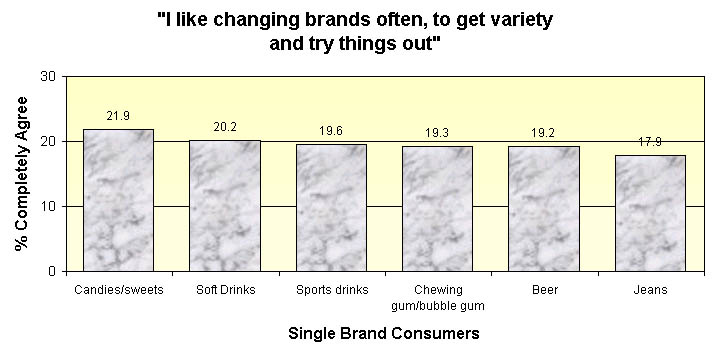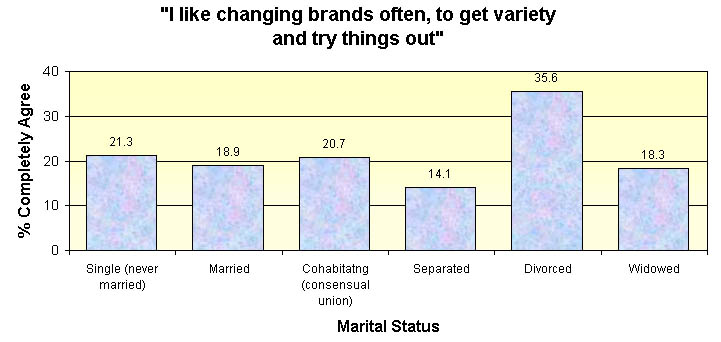
Variety-Seeking Behavior in Product Choice
In a free market (as opposed to a planned economy), consumers are offered a great deal of choices. Within a single product category, there are often a large number of brands. These brands may differ in size, quality, price, image and other attributes. In a free market, consumers make their choices based upon the utilities that they derive from the different brands. Thus some consumers will look for the cheapest product, others will look for the best quality (whatever that means) and still others will look for products that are consistent with their self-images.
There are also consumer utilities that are independent of product attributes. An example is the so-called variety-seeking behavior, whereby consumers routinely switch from one product to another because they are motivated by the utility inherent in experiencing variety. For marketers, such variety-seeking behavior represents mixed blessings of opportunities and vulnerabilities. An understanding of variety-seeking behavior is therefore important in defending and/or expanding market share.
In the marketing literature, one approach towards the study of variety-seeking behavior is based upon understanding the psychological processes that lead to the need for variety. One psychological driver is boredom, whereby the utility from one brand decreases with repeated use while competing brands become more attractive simply by being not the current brand. Another driver is curiosity because different brands may promise to provide different experiences.
We will now cite some survey data from the 2001 TGI Colombia study. This is a survey of 7,020 persons between the ages of 12 and 64 years old conducted by IBOPE Colombia. During this survey, the respondents were shown the statement: "I like changing brands often, to get variety and to try things out." 19.9% of the respondents said that they 'completely agreed' with this statement.
In the following graph, we show the agree rates separately by age/sex groups. For the females, the agree rates are slightly higher among the 12 to 24 year olds, but the older groups are below average. For the males, the agree rates are highest among the young (12 to 34 year olds), and then drops down rapidly as age increases.

The study of variety-seeking behavior based upon psychological processes may be criticized for relying too much on stated intention A different approach to the study of variety-seeking behavior is through the empirical analysis of observed temporal variations in consumption patterns. Better yet, it would be interesting to see the extent to which the stated preference for variety-seeking behavior translates into physical action.
In the next chart, we show the 'completely agree' rate to the statement "I like changing brands often to get variety and try things out" separately within product users who have consumed a single brand within a product category. For the beverage and snacks, the time period was 7 days; for jeans, the time period was 12 months. If the statement means anything, we would expect the single brand users to be less likely to agree. Compared to the overall agree rate for the total population of 19.9%, the agree rates for the single brand users in most of these product categories are not significantly different.

One reason for the lack of agreement between the psychographic statement and the reported purchase behavior is that this specific psychological statement was not category-specific. A consumer may be a brand-loyalist in some product categories, but a variety-seeker in other categories. Another reason is that each category has its own configuration of competition and product differentiation. The best synthesis of the psychological and behavioral approaches should be category-specific.
We leave you with one final example of variety-seeking behavior. What do you think is really going on here? Do you have enough ideas for several telenovelas ...?

(posted by Roland Soong, 9/08/2001)
(Return to Zona Latina's Home Page)